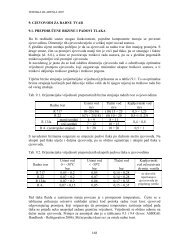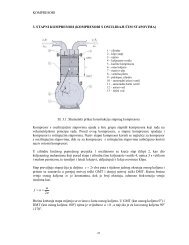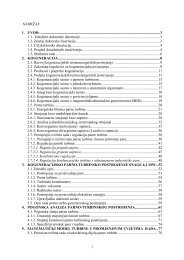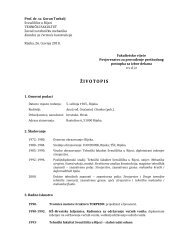universityâenterprise cooperation
universityâenterprise cooperation
universityâenterprise cooperation
You also want an ePaper? Increase the reach of your titles
YUMPU automatically turns print PDFs into web optimized ePapers that Google loves.
and a growing network of resource providers<br />
which can help to stimulate company<br />
development will contribute to wider<br />
attraction of WB region.<br />
As a good example it can be mentioned the<br />
Novi Sad Science Incubation Centre (NOSIC),<br />
Serbia established in 2003. There are now<br />
44 registered enterprises in high-tech areas.<br />
Just for illustration we would like to name a<br />
few: DMS Group, Energobull, Intens, HIO-FTN<br />
Group, 4 Expand, Levi 9, Novatronic, Novilog,<br />
etc. All were established by university staff<br />
and researchers at the University of Novi<br />
Sad, Serbia. 28 companies are doing business<br />
with a significant profit and 576 persons are<br />
employed in these enterprises.<br />
6.3.2 Organization of WBC Industrial Clusters<br />
Regional clusters, the geographic<br />
concentration of economic activities in a<br />
specific field connected through different<br />
types of linkages, from knowledge spillovers<br />
to the use of a common labour market, are<br />
increasingly viewed as an interesting model<br />
for universities-enterprises <strong>cooperation</strong><br />
and understanding the economic strength<br />
or competitiveness of a region.<br />
One of the most promising knowledgetransfer<br />
programmes in WBC can be model to<br />
develop industrial (research-driven) clusters<br />
involving both enterprises and universities<br />
and/or research institutes. Regional clusters<br />
will enable companies to reach higher levels<br />
of productivity and be more innovative. Apart<br />
from companies research and educational<br />
institutions and regional development<br />
agencies can increase their economic benefits.<br />
They can improve linkages and mobilize joint<br />
action to improve critical areas of the clusterspecific<br />
business environment in the region,<br />
and to increase international visibility of<br />
the regional cluster. The established clusters<br />
should be mutually linked and they need to<br />
have close relations with the Chambers of<br />
Commerce in WBC region.<br />
One of the aims of clusters is to promote<br />
knowledge transfer among the members of<br />
the cluster. Knowledge and technology transfer<br />
takes place between members of the clusters<br />
and includes skills and expertise transfer<br />
from universities and research institutes to<br />
enterprises. The knowledge should circulate<br />
also in the opposite direction – clusters will<br />
stimulate the development of new courses in<br />
the universities, for example courses on new IT<br />
technologies, virtual engineering applications,<br />
embedded systems, bioengineering, flexible<br />
and organic electronics, rapid prototyping, etc.<br />
The members of the clusters will cooperate<br />
mainly in the field of joint promotion, joint<br />
R&D projects, participation in joint education<br />
events and in other forms of acquired<br />
knowledge. Cooperation in setting up the<br />
joint infrastructure of the cluster and in<br />
lobbying for common interests will be also<br />
important knowledge transfer activities.<br />
Innovation regional policies should enhance<br />
linkages between the scientific community<br />
(universities and research organizations) and<br />
enterprises by improving the microeconomic<br />
capacity of the nations in WB region. The<br />
role of universities in the innovation process<br />
typically involve five areas: spin-out of<br />
research projects leading to the formation of<br />
new firms, licensing technology to established<br />
firms, university-enterprises collaboration<br />
programs (e.g. joint funding of research),<br />
publishing of research making it generally<br />
available, and through the continuous flow<br />
of graduated students and PhDs with new<br />
skills and knowledge. However, university<br />
linkages with established firms often lead to<br />
higher growth which points to the fact that<br />
establishing regional industry clusters are<br />
critical to the university-industry linkage in<br />
the innovation process.<br />
The main reasons for entering in the clusters<br />
can be:<br />
• The financial subsidy from the state;<br />
• The commercial pressure for a higher degree<br />
of linkage and <strong>cooperation</strong> between sectors;<br />
• Improved access to information resources<br />
and knowledge transfer through joint<br />
projects.<br />
Key success factors include the creation<br />
of trust among the members, effective<br />
leadership of the cluster and the effective<br />
support of the top management.<br />
109<br />
New WBC model of university-enterprise <strong>cooperation</strong> 6
















